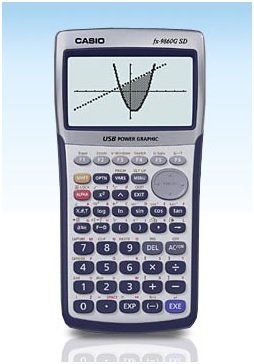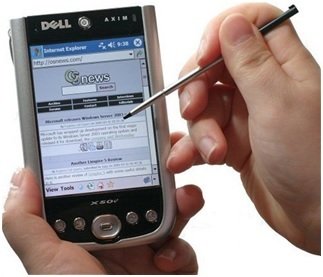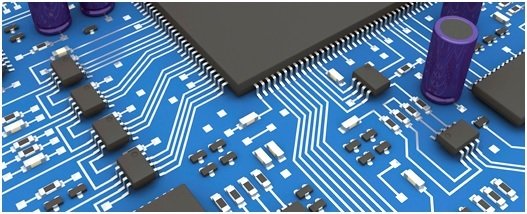Embedded systems are ruling our lives. Embedded systems are an important subject in electronics that is mostly not given its due importance. If we talk about technology, we think about laptops, computers, DSLRs, cameras, mobile phones, and tablets. But we never think about or talk about the embedded systems that are running them. So, here we will discuss what an embedded system actually is and will also share various real-life examples of embedded systems.
Introduction to Embedded Systems
An embedded system is a computer system that consists of both hardware and software. In simple words, this system performs a particular job. Depending on the type of application, it may or may not be programmable. The main part of an embedded system is a microcontroller, which controls all the operations for a particular application or job.
Real Life Examples of Embedded Systems
Real-life examples of embedded systems include mobile phones, cameras, digital watches, laptops, washing machines, tablets, etc. Mobile phones, laptops, and tablets are complete computer systems, but digital watches, traffic signals, and washing machines are not complete computer systems yet; we include them in embedded systems.
There are countless real-life examples of embedded systems. Here, we are sharing some of them. Have a look.
Calculator
This is one of the most famous real-life examples of embedded systems. In our opinion, the calculator is the most common example of an embedded system. We all use calculators in our daily lives to solve mathematical problems. The development of calculators is one of the earliest in embedded systems. In the calculator, we give input from the keyboard, and the system performs the function like add, subtract, etc. and displays the result on the LCD. Nowadays, we mostly use scientific calculators. They have a very high-performance processor. These calculators have the ability to perform complex mathematical functions. These calculators are programmable. It is just because of the embedded system that these scientific calculators are more advanced in their functions as compared to simple calculators.

Industrial Robots
There are many real-life examples of embedded systems in industries. Nowadays, all processes are moving towards automation. So, we need to mention industrial robots as the most important applications of embedded systems. Industrial robots are available in a variety of forms, and each form has a different number of functions to perform. There are some industrial robots that can move tools, parts, materials, etc. Some of the robots are useful in the manufacturing of different equipment, whereas others assemble different parts of equipment. The productivity rate increases with these robots, all due to the embedded systems. These robots are excessively useful in places where human access is difficult. In order to understand how the industrial robot works as an embedded system, you need to know about automated painting robots.
Types of Industrial Robots
Nowadays, these robots decrease human intervention as they perform the task in less time with excellent results. The operations that a robot performs are controllable through programming.
- Nowadays, industries are widely using painting robots. This is because these robots are very efficient, and the time requirement to complete the whole process is fast. Also, the requirement or use of paint is pre-set for the process.
- Another example of an industrial robot is an assembly robot. The function of such a robot is to assemble different parts. It collects all the different parts and assembles them in the right sequence to form a final product.
These are a few real-life examples of industrial robots. Many other types of robots are being used in industries that use embedded systems.
Personal Digital Assistant
A personal digital assistant is also an embedded device that is for personal use. We can consider it a mini-personal computer and easily hold it in our hands. There are a lot of personal embedded devices around us, like data organizers, mobile phones, personal digital assistants, etc. A personal digital assistant was used before the invention of the smartphone. It is a personal device that is an information manager and can connect to the internet. It has a touchscreen display with which the user interacts with the PDA device. The data is input through its touchscreen display, and it stores the data on a memory card. There is Bluetooth or WiFi connectivity. Personal digital assistant devices with keypads instead of touchscreen displays are also available. This device is user-dependent for entering and storing information. It is lightweight and performs various tasks.

Automated Teller Machine
We are all familiar with ATMs, the machines for withdrawing money. That is also an example of embedded systems. ATMs are computerized devices that every bank must have nowadays. We know very well how ATMs work, how we have to input our ATM card and password, and as a result, receive our money.
This machine consists of a card reader that detects the person’s card and accesses important information through that card. Another part of the machine is a keypad, from which we enter our password and other commands. There is a screen on which information is displayed; the receipts are printed through a printer; and a cash dispenser delivers us the money. Through the host computer, a network is established between a computer at the bank and an ATM. So this way, the bank computer verifies all the data and stores a record of transactions. The microcontroller carries out all the operations, whether input or output. That’s how this embedded system works.

Automatic Washing Machine
This is also one of the most famous real-life examples of embedded systems. A washing machine at home is another common example of embedded systems. First, we put all the dirty clothes inside the machine. Then we push the start button after setting the timer and other parameters. The washing machine measures the weight of the laundry we have put inside. It opens the valve to let the clean water go inside. On the basis of load and water level, the valve gets closed. The rotating drum of the washing machine starts rotating, and that’s how washing starts. After the washing cycle, the outlet valve opens to release all the dirty water. The sensor detects whether all the dirty water has been removed or not and opens or closes the outlet valve. This whole process repeats, and we get our clothes washed.
Conclusion
In conclusion, this article provides a real-life example of embedded systems and their importance in modern society. It covers calculators, robots, ATM machines, automatic washing machines, and PDM, to name a few, for a better understanding of the concept. Hence, you can utilize these concepts to distinguish between other types of embedded systems. Hopefully, this article was helpful in expanding your knowledge in regards to embedded systems and their applications in our society.
You may also like to read:
- Bare-metal and RTOS Based Embedded Systems
- Bare Metal Embedded Systems Build Process using GNU Toolchain
- scheduling algorithms for real time embedded systems
- Introduction to Embedded Operating Systems
- ATtiny2313 8-bit AVR Microcontroller
- Nested Vectored Interrupt Controller (NVIC) ARM Cortex-M Microcontrollers
This concludes today’s article. If you face any issues or difficulties, let us know in the comment section below.



